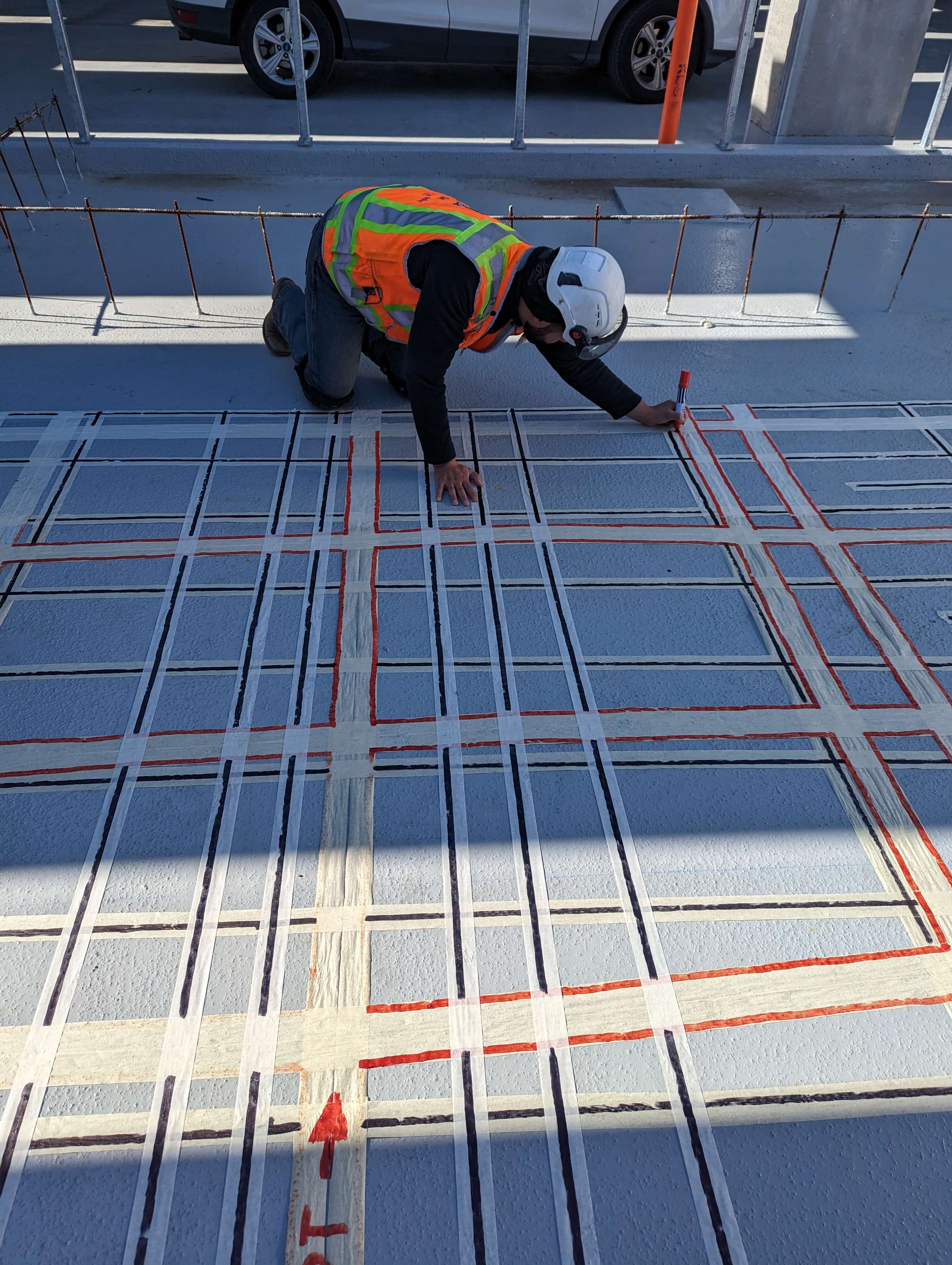The Value of Professional Concrete Scanning Providers
The Value of Professional Concrete Scanning Providers
Blog Article
Unveil the Transformative Power of Concrete Scanning in Optimizing Efficiency and Safety And Security
Concrete scanning has emerged as an important tool in the building and construction market, supplying unrivaled benefits in enhancing job effectiveness and making certain safety criteria. The transformative power of concrete scanning exists in its capacity to supply detailed insights and real-time data, reinventing how projects are prepared and carried out.
Importance of Concrete Scanning
Guaranteeing the structural stability and safety of building tasks begins with the essential action of carrying out extensive concrete scanning. Concrete scanning is a non-destructive approach utilized to detect and map subsurface components within concrete frameworks.
The importance of concrete scanning can not be overemphasized, as it plays an essential duty in stopping mishaps, reducing project delays, and ensuring the long-term durability of the construction. By determining potential risks before the construction phase begins, contractors can apply proper safety and security steps and make notified choices concerning the style and execution of the job. In addition, concrete scanning aids in optimizing task timelines and spending plan by staying clear of unexpected prices and delays that may arise because of unforeseen obstructions within the concrete. Eventually, buying extensive concrete scanning is a positive approach that improves both efficiency and safety in building and construction tasks.
Just How Concrete Scanning Functions
Concrete scanning operates as an essential device in building and construction tasks by employing sophisticated technologies to detect and map subsurface components without causing structural damages. Ground Permeating Radar (GPR) and Electromagnetic Induction (EMI) are 2 main approaches used in concrete scanning. GPR jobs by producing high-frequency radar pulses right into the surface, which recuperate when they encounter subsurface objects or voids. The moment taken for the signal to return shows the depth and location of the things. EMI, on the various other hand, uses magnetic fields to recognize differences in product structures, such as recognizing rebar or avenues within concrete structures.
During the scanning procedure, the information accumulated is examined in real-time, permitting instant identification of possible dangers or barriers under the surface area. This information aids in decision-making, guaranteeing that building activities continue securely and efficiently. Additionally, 3D imaging software program can be made use of to produce thorough maps of the subsurface aspects, even more enhancing job preparation and execution. By using these advanced technologies, concrete scanning dramatically reduces the danger of pricey damages and injuries on building sites.
Advantages of Concrete Scanning
One of the main benefits of concrete scanning is the capability to detect and situate ingrained items such as rebar, post-tension cable televisions, and avenues precisely. Concrete scanning helps in planning and developing more efficiently, as it supplies exact information concerning the area and deepness of architectural elements.

Study: Concrete Scanning Success

In an additional situation, a construction firm used 3D concrete scanning to analyze the problem of aging concrete structures in a historical structure. The thorough scans supplied valuable understandings right into the extent of degeneration and helped prioritize upkeep efforts successfully. By proactively resolving areas of problem identified with scanning, the firm had the ability to prolong the life expectancy of the framework and ensure passenger safety.
These situation researches highlight the transformative power of concrete scanning in improving effectiveness, accuracy, and safety in building jobs.
Implementing Concrete Scanning in Projects
Carrying out innovative scanning modern technologies throughout construction tasks has come to be significantly vital for enhancing precision and safety. By integrating concrete scanning into job planning and implementation, building and construction groups can identify prospective hazards, such as rebar or post-tension cables, hidden within concrete structures. This proactive strategy decreases the threat of mishaps, delays, and pricey rework, ultimately bring about a lot more effective project timelines and budgets.
To apply concrete scanning properly, task supervisors need to team up very closely with knowledgeable scanning experts to identify the most suitable scanning techniques for the particular task needs. Involving scanning experts from the early phases of a task makes it possible for the team to produce comprehensive scanning plans that deal with vital areas of issue and ensure extensive data collection.
In addition, incorporating concrete scanning right into regular task process can streamline decision-making processes, as real-time check data offers instant insights into the condition of concrete structures - Concrete Scanning. This data-driven approach promotes educated analytic and makes it possible for groups to make modifications quickly, promoting a culture of performance and safety and security throughout the job lifecycle

Conclusion
Finally, concrete scanning plays a critical duty official website in enhancing efficiency and safety in building and construction tasks. By utilizing advanced innovation to spot and map out underlying structures within concrete, this process assists to stop pricey errors, make sure structural stability, and reduce dangers on website. With the ability to discover covert components and provide exact information, concrete scanning proves to be a valuable tool for enhancing project results and taking full advantage of general success.
Concrete scanning is a non-destructive technique utilized to identify and map subsurface elements within concrete frameworks. Furthermore, concrete scanning aids in maximizing task timelines and spending plan Look At This by preventing unforeseen expenses and delays that might develop due to unpredicted obstructions within the concrete. One noteworthy instance research study entails a massive remodelling project where concrete scanning played an important function in guaranteeing job success.In one more case, a building and construction business used 3D concrete scanning to analyze the condition of maturing concrete frameworks in a historic structure. By integrating concrete scanning right into project preparation and execution, construction groups can identify prospective threats, such as rebar or post-tension cables, concealed within concrete frameworks.
Report this page